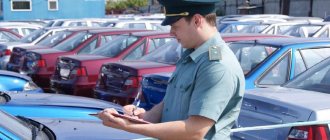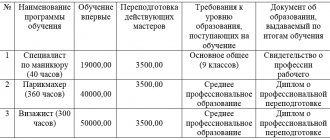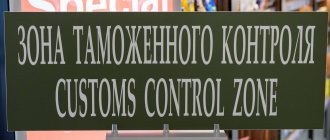Who needs all this?
Until recently, the state turned a blind eye to the fact that Russians were actively importing cars from Armenia and using them freely on the territory of our country. However, the fact that the treasury is not receiving significant sums due to the difference in the payment of customs duties set the teeth on edge. At the moment, according to various estimates, from 200 to 300 thousand cars, registered on the territory of the Republic of Armenia, are moving on the roads of Russia - and all of them not only underpaid to the budget, but also drive with impunity ( fines are received at the place of registration of the vehicle. -
Note ed.
).
At some point, the customs authorities remembered clause 35 of the Conditions and Transitional Provisions (Appendix No. 3 to the Treaty on the Accession of the Republic of Armenia to the Treaty on the Eurasian Economic Union of May 29, 2014), which reads:
Cars specified in paragraphs 30 and 31 of this annex, registered on the territory of the Republic of Armenia, may be temporarily imported into the territory of other member states of the Eurasian Economic Union only by persons permanently residing in the Republic of Armenia, without paying customs duties, taxes and without providing security for the payment of customs duties. duties, taxes. The import and use in the territories of other member states of the Eurasian Economic Union of such vehicles by other persons, as well as their alienation, transfer for use, disposal in the territories of such other member states of the Eurasian Economic Union are allowed only subject to their customs declaration in the customs authorities of these other states and payment of customs duties and taxes, taking into account paragraph 31 of this appendix.
That is, no changes in legislation occurred. It’s just that the control and supervisory authorities are closely taking charge of citizens who once discovered a life hack: “how to buy a car cheaper and not pay duties.”
Expert opinion
Alexey Aksenov,
lawyer, lecturer at the Department of Criminal Law Disciplines at the Institute of Economics and Economics named after. A.S. Griboedova:
The current situation was quite predictable. When a car was imported from third countries included in the EAEU, the owner paid duties precisely according to the legislation of Armenia. The question arises: if the car is constantly used in the territory of the Russian Federation, where customs duties are much higher, then who should pay the difference in order to compensate for the lost income? This responsibility will one way or another fall on the owner of the car. When purchasing a car much cheaper in another country, a person had to understand that he was taking a risk. And now this risk has come - the state’s attitude towards cars that were imported into the territory of the Russian Federation has changed.
Customs
Import rules:
Free import: – 200 cigarettes; – 2 liters of alcohol; – 6 types of perfume products, maximum 5 liters; – personal belongings worth up to $10,000 and weighing up to 50 kg (for residents and non-residents). The customs declaration completed upon arrival must be retained by the passenger.
Prohibited: – narcotic drugs, pornographic materials, fruits and vegetables without appropriate documents.
Rules on weapons and ammunition:
Passengers can import firearms and ammunition if they have a permit, license or prior advice obtained from the www.police.am website. They must be carried as checked baggage and declared prior to departure.
Wild Fauna and Flora:
The import of certain species of endangered plants and animals is prohibited or restricted under CITES. For more detailed information, please refer to CITES: www.cites.org.
Additional information about the rules:
Works of art must be accompanied by a document from the Cultural Heritage Preservation Agency for export. The passenger must have a photograph of each piece of art.
Export rules:
Prohibited: drugs, pornographic materials, fruits and vegetables without appropriate documents.
Pets:
Pets must be accompanied by a veterinary health certificate. Pets must be vaccinated against rabies within 6 months and 20 days before entry.
Baggage rules:
At the first airport of entry.
Confiscation of cars with Armenian license plates - advice from a lawyer
Lawyer of the Moscow Bar Association Mikhail Tarasov:
— Currently, in connection with amendments to the Decree of the Government of the Russian Federation of August 12, 1994 N 938, cars with Armenian license plates are increasingly stopped by traffic police officers and handed over to customs if there are violations of restrictions on transferring them to third parties.
Based on clause 5 of Art. 258 of the EAEU Labor Code, customs transfers such vehicles for safekeeping, drawing up a protocol for the detention of goods and documents for them.
The emerging judicial practice in relation to detained cars with license plates of the Republic of Armenia, in my opinion, arbitrarily deprives the title owner of the property rights.
Typically, the procedure for importing a vehicle into the territory of the EAEU has already been completed, which means there are no restrictions on the right to use private property throughout the EAEU.
Currency
Rules for importing currency:
Local currency (Armenian dram - dram) and foreign currency: no restrictions. Cash amounts in excess of US$10,000 or equivalent must be declared. An exception to the declaration for the import of cash are passengers arriving from the Eurasian Customs Union (Belarus, Kazakhstan, Federal Reserve System of Russia).
Rules for exporting currency:
Local Currency (Armenian Dram-AMD) and Foreign Currency: Unlimited up to USD 10,000 or equivalent. Warning: More than $10,000 must be transferred through a bank. Passengers traveling to the Eurasian Customs Union (Belarus, Kazakhstan, Federal Reserve System of Russia) are exempt.
In Russia, cars with Armenian license plates have begun to be confiscated. What's happening? O_0
This is the third article about cars that are registered in Armenia and move around Russia. Sad article. About zugzwang (actually a chess term, but it is already used in everyday life - as a synonym for hopelessness).
Part one and part two
Essence of the question. More than five years after the start of the import of cars from Armenia to Russia by citizens living in Russia, the Federal Customs Service of the Russian Federation (hereinafter simply referred to as customs) suddenly realized that all this time this procedure had not been performed at all as it was correct and necessary , and with desperate zeal began to restore order. The owners of such cars found themselves in a situation in which no matter what they did next, everything would worsen their situation, the so-called zugzwang, well, or Kobayashi Maru (if “Star Trek” is closer to chess for you), has set in.
Background (about buying a car in Armenia with savings on customs duties) in two parts here:
- Theory
- Practice
Well, now part three - “Revenge of the Sith Customs”
In order. In certain regions of the Russian Federation, persecution has begun against owners of cars with state license plates (hereinafter referred to as the State License Plates) of the Union - as a member of the Eurasian Economic Union (EAEU), the Republic of Armenia. In some places this persecution is milder, in others it is more severe. Thus, reports began to arrive en masse from Chelyabinsk that inspectors of the road patrol service began to actively “catch” such cars and draw up protocols for each one under Article 12 of the Code of Administrative Offenses of the Russian Federation. Mainly 12.1 Code of Administrative Offenses of the Russian Federation, in some cases even 12.3. Code of Administrative Offenses of the Russian Federation. And from the cities of Severodvinsk and Kurgan information appeared about the seizure of cars by customs.
We tried to objectively study the facts and learn more about the situation. We'll tell you about everything we've learned.
First of all, we asked the owners of such cars in messenger groups and social networks - and, judging by the answers, everything is calm in the country as a whole. Exceptions are the Urals, Khanty-Mansiysk Autonomous Okrug and some cities (more on them below) . In the rest of Russia they continue to drive safely on Armenian license plates. The maximum that happened was a census of owners and registration data for cars, with the further transfer of this information to the Centers for Automated Recording of Administrative Violations in the Field of Traffic of the State Traffic Safety Inspectorate of the Main Directorate of the Ministry of Internal Affairs of Russia (hereinafter referred to as TsAFAP), so that such cars would not fall out of the system of calculating fines.
At the beginning of the year, the first precedent occurred with the seizure of a car in Nizhnevartovsk. In that case, the owner transferred control of the car to another person, which was recorded by the traffic police crew, who sent the car to a special parking lot, and also passed on the information to customs, who subsequently seized the car and, after the trial, sold it at auction.
In March, two cars were seized in Severodvinsk (Arkhangelsk region). On a well-known video hosting site you can easily find the whole story directly from the owner of these cars. In this case, the customs office itself came to the owner with a notification of illegal customs clearance.
June. Five cars were seized in Kurgan. Here the owners were already identified based on orientation from customs through TsAFAP point by point by traffic police crews. Then the cars were sent to the Kurgan customs office, where they were seized.
July. In Chelyabinsk, they began to stop cars with Armenian license plates en masse and issue protocols under Articles 12.1 Part 1 or 12.3 Part 1 of the Code of Administrative Offenses of the Russian Federation (Driving a vehicle not registered in the prescribed manner and Driving a vehicle by a driver who does not have registration documents for the vehicle , and in established cases, documents provided for by the customs legislation of the Customs Union, respectively), in some cases, those who drove under insurance or by proxy had their cars placed in specialized parking lots, from where the owners, after paying a fine, would be able to pick them up.
Exclusion Zone
Well, let's go to Kurgan. Yes, indeed: four cars were seized and are parked in temporary storage, among the decommissioned vehicles of the Internal Affairs Directorate, and another one is already in the parking lot of the Federal Property Management Agency (now the Federal Agency for State Property Management). We talked with three owners of cars with Armenian license plates - all of them personally traveled to Armenia, bought cars there, registered them in their names in the proper manner, drove them into the Russian Federation themselves, regularly pay taxes and fines for these cars and drive carefully. They also drive their cars themselves. Preempting the voices of haters - yes, we were lucky to find just the right ones. In reality, the “wrong” ones are by and large not of interest to us - their financial risks are much lower, and their responsibility is much less, if any.
Cars detained by customs in Kurgan, in the parking lot of the Department of Internal Affairs vehicle fleet, part of which was used for their storage And this is the parking lot of the Federal Property Management Agency. Two Alphards: one with license plates from Armenia, the second from Abkhazia (no information could be found about this car)Here is one example (the black Honda from the photo above), Alfard, who is already standing in the parking lot of the Federal Property Management Agency, has a similar package of documents and substantiated articles:
In this case, customs sees the fact that the owner (not a citizen of Armenia) is driving a car that has the status of an imported product, cleared in Armenia at preferential rates provided for the transition period of joining the EAEU and, accordingly, not intended for export without paying import duties at a single tariff Customs Union.
This is a completely real example. We were personally convinced of his existence, as well as the fact that he was not the only one in Kurgan.
"Confiscation" option
Let's try to figure out what's happening
There are not many possible combinations of “owner - car with Armenian license plates and registration in Armenia”, and not everyone is at risk of suffering and not to the same extent.
Possible options are:
1. The car was imported and cleared through customs before October 10, 2014.
2. The car was imported between October 10, 2014 and January 1, 2021;
2.1. The car was cleared through customs at Armenian tariffs before joining the EAEU;
2.2. The car is cleared through customs according to EAEU tariffs.
3. The car was imported and cleared through customs according to EAEU tariffs in 2021 and later.
4. The car is cleared through customs as spare parts.
5. The car was imported and not cleared through customs.
Options 4 and 5 are illegal, and with the proper evidence base (if proven), those who exploit this will face trouble, up to the relevant articles of the Criminal Code of the Russian Federation and, in some cases, “landing.” We do not consider it necessary to consider these categories in more detail - they can cope with them without us. People called these options “candy wrappers” - for the complete lack of legal grounds for existence. The “candy wrappers” also include “doubles” - when owners buy sets of license plates and registration certificates from a similar car. The sanctions, if these facts are established, are as follows. For the transfer of the right to use or other disposal of vehicles temporarily imported by individuals without complying with the conditions established by customs legislation - in accordance with Part 2 of Article 16.24 of the Code of Administrative Offenses of the Russian Federation. For forgery of documents and use of knowingly forged documents - in accordance with Article 327 of the Criminal Code of the Russian Federation.
Options 1, 2.2 and 3 are completely legal, no matter who owns such a car, he does not risk anything at all and can at any time pay a “salvage fee” and receive the usual PTS and GRZ with the region at the place of registration or temporary registration, presented to the MREO of the traffic police , after which anyone can control it.
Point 2.1 remains. - the most common , since this period saw a boom in the import of cars with Armenian license plates due to relatively low prices and a rich assortment. This point is the most problematic, since two customs clearance schemes were in effect at once - according to tariffs before joining the EAEU and according to EAEU tariffs. Even the customs itself (neither ours nor the Armenian one) could not understand the intricacies of the wording.
As it turned out only now, if a car was imported between 2014 and 2021 and cleared through customs at tariffs before Armenia joined the EAEU, then from a legal point of view it is considered a product for internal use within the borders of Armenia and only by citizens of Armenia. This is the interpretation of Russian customs. At the same time, the Customs Code of the EAEU uses a different wording - “permanently residing” in it, but more on that below. Such a car can only be operated by an Armenian owner throughout the entire EAEU with only two restrictions - he can sell or entrust driving such a car only in Armenia, he must drive it himself in the rest of the EAEU countries and return it back to Armenia to sell it.
Moreover, if such a car is driven by a citizen of Russia or another EAEU member country, Kazakhstan, for example, then customs now considers such cars to be foreign goods requiring customs clearance by introducing the difference in customs duties between the EAEU tariffs and payments already paid to the treasury of Armenia. It was for this reason that the cars were taken away in Kurgan.
The main category of those who are persecuted by Russian customs are citizens of the Russian Federation, permanently residing on the territory of the Russian Federation, who bought and operate a car purchased in Armenia as on the territory of the EAEU, but cleared through customs for the domestic market of Armenia. These are the majority (according to some sources - 200 thousand), and the fate of the majority will be similar.
Vane position
On the one hand, the texts of the agreement on Armenia’s accession to the EAEU and the EAEU Customs Code have not changed since 2014, and a reasonable question is “where was everyone looking when they bought?” quite fair, but there are a number of nuances that require careful consideration.
1. In 2014, customs was unable to deal with the situation with cars with Armenian license plates. And it came to the final decision only after the completion of the transitional stage of Armenia’s accession to the EAEU.
1.1 Until the end of 2021, there were official responses to citizens’ requests that the import and operation of such vehicles was free and permitted.
A scan of the customs response authorizing import.
1.2. In 2021, the answers no longer allowed such imports without paying the difference in payments.
2. In the Treaty on Armenia’s accession to the EAEU dated May 29, 2014, in the second paragraph of paragraph 40 in section “V. Issues of customs and tariff regulation” says:
“The Republic of Armenia will ensure the use of goods for which lower rates of import customs duties are applied compared to the EAEU CCT duty rates only within its territory and will take measures to prevent the export of such goods to the territory of other member states of the Eurasian Economic Union without additional payment of the difference the amounts of import customs duties calculated at the rates of the EAEU CCT, and the amounts of import customs duties paid when importing goods into the territory of the Republic of Armenia.
The Republic of Belarus, the Republic of Kazakhstan and the Russian Federation have the right to determine the procedure for the arrival of these goods on their territory.”
From which it directly follows that such cars should not have left sunny Armenia at all. And the Russian Federation had the right to determine the procedure for letting through everyone whom the Armenian customs recognized as legitimate and released without additional checks.
3. Russian customs, in turn, also did not comply with clause 33 of the Treaty on Armenia’s accession to the EAEU dated April 29, 2014: “In relation to the vehicles specified in clauses 30 and 31 of this appendix, when imported into the territories of other states - members of the Eurasian Economic Union, customs control is carried out, and if it is necessary to pay customs duties, customs operations are carried out in the manner established by the Customs Code of the Customs Union, other international treaties regulating customs legal relations and other acts constituting the law of the Eurasian Economic Union, taking into account paragraphs 34 and 35 of this applications." Despite the fact that at the external borders this mechanism has been perfected, and in the regulations the customs officer has 10 minutes to establish the status of the imported car standing in front of him (Letter of the Federal Customs Service dated October 1, 2010 No. 01-11/47866 “ On the performance of customs operations and customs control of cars for personal use transported through the Russian-Belarusian or Russian-Kazakh sections of the state border of the Russian Federation”, paragraphs 9 and 10). From which we can conclude that our customs has the resources for this, but for some reason this provision was not implemented.
It’s sad, but there was no information that earlier we were all wrong, and now we (meaning customs) found a mistake, just as the owners were not given the opportunity to correct the situation (pay extra duty, take out the cars under the same conditions as on moment of import, etc.). The “raids” just began - sometimes with confiscation, sometimes with the preparation of protocols or simply a census of future targets.
4. A citizen of the Russian Federation, according to the Customs Code of the Russian Federation, when importing a car that has the status of a foreign product, is obliged to either issue temporary import, or pay all duties within 10 days and receive Russian license plates and PTS. But in relation to cars from Armenia, Russian customs refused to issue such a document, citing the fact that this would be a violation of the customs legislation of the EAEU. In the Customs Code of the EAEU in Art. 264 actually spells out this point quite clearly, but it’s mostly all about foreigners. But it stipulates to whom such a car can be transferred and in what cases, which actually prohibits the sale of such a car by proxy.
5. Everyone who independently understood the EAEU documents related to the import of a car was guided by three main documents - the Customs Code of the Russian Federation, the Customs Code of the EAEU and the Treaty of Accession to the EAEU of Armenia. And you probably paid attention to the interesting wording - “permanent resident”. But I most likely did not find its interpretation regarding the status of a citizen of the Russian Federation after arriving in Armenia and registering (this was required to formalize a purchase and sale transaction). This formulation is present in Russian legislation in 115-FZ of July 25, 2002 “On the legal status of foreign citizens in the Russian Federation” in Article 2, paragraph 11: “a foreign citizen permanently residing in the Russian Federation is a person who has received a residence permit.” But there is no similar interpretation of the wording in the EAEU Labor Code. At the same time, the fact of permanent residence of a citizen of the Russian Federation at a specific address in the Russian Federation is considered to be a stamp in the passport with registration, and all residents of the EAEU member countries are equal in rights by this strange wording. Strange, because under it a citizen of any country that is part of the EAEU can find himself, and at the same time not be considered a foreign citizen, but live in a neighboring republic without restrictions. The question of who and by what criteria should be considered a “permanent resident” and how to document this is still open.
In 2021, when we arrived in Armenia, the answers from customs and the registration department in Yerevan itself were the same - registration on the territory of Armenia, drawn up on a small receipt (which, by the way, was taken when registering the car), this is a sufficient argument to sell the car, and register and use throughout the EAEU.
And there are still some points that are not precisely defined - for example:
— Every owner of a car registered in Armenia is obliged to pay taxes to the treasury of Armenia. Can he be recognized as a tax resident? In the Russian Federation, anyone can be a tax resident, but they must stay on the territory of the Russian Federation for 183 days during the year, counting from the moment they cross the border. In the case of the EAEU, there are no stamps when crossing the Union border. You can easily fly to Armenia using an internal Russian passport. And pay transport tax without leaving the couch.
In addition, nowhere in the documents does it indicate how the car was cleared through customs, at what tariffs and rates. This is checked when registering a car in Armenia, but the information is not even disclosed to the owner (unless specifically asked). On the customs website, you can only find out by VIN/frame when the car was released from customs. Therefore, it is stipulated that representatives of the authorities will take care of this - those who register will not allow it to be done in the absence of customs clearance, and customs will not let you out of the country without paying additional duties... This concerns the import of a car.
With regard to the operation of such cars on the territory of the Russian Federation by citizens of the Russian Federation, there are also controversial and unclear points, for example:
- protocols under 12.1 part 1 of the Code of Administrative Offenses of the Russian Federation “Driving a vehicle not registered in the prescribed manner” contradict the Decree of the Government of the Russian Federation of August 12, 1994 N 938 (as amended on April 26, 2020) “On state registration of motor vehicles and other types of self-propelled equipment on territory of the Russian Federation" (hereinafter simply PP No. 938):
clause 2(1). “Registration of vehicles, with the exception of vehicles registered on the territory of the member states of the Eurasian Economic Union or temporarily imported into the customs territory of the Eurasian Economic Union for a period of no more than six months, is carried out with the issuance of relevant documents and state registration plates without reservation for legal or physical faces of their individual series or combinations of symbols. The procedures for issuing such signs are established by the Ministry of Internal Affairs of the Russian Federation, the Ministry of Agriculture of the Russian Federation in accordance with their competence.”
That is, all the signs that the car is still properly registered in the customs territory of the EAEU. Incorrectly cleared through customs - yes, there is probably no point in arguing here (but in this case it would be nice to prove intent to commit this offense, Code of Administrative Offenses 2.2), but it was completed in perfect order: the car has a license plate read by cameras, there is a registration certificate , there is insurance. Fines and taxes are paid as usual.
Protocols under 12.3, part 1 of the Code of Administrative Offenses of the Russian Federation “Driving a vehicle by a driver who does not have registration documents for the vehicle, and in certain cases, documents provided for by the customs legislation of the Customs Union, with marks from customs authorities confirming the temporary import of the vehicle” raise doubts in the correctness of their use, since the car is registered as expected, the customs office did not provide temporary import for this option, and what documents you need to have in this case - too.
In both cases of application of the articles, there is currently no law enforcement practice - in order to understand how the owner should act correctly in cases where the protocol will be issued by traffic police inspectors. All that remains is to wait for the trials and decisions made in these cases and hope that irremovable doubts will be interpreted in favor of the accused. They will also prove what everyone who fell into the customs trap without announcing a change in behavior was guilty of.
In fact, Kurgan and Arkhangelsk customs have proposed only one working solution to the problem - confiscation and further sale at auction. The re-export and additional payment of the difference in customs duties proposed in Kurgan will actually not give the owner either a PTS or Russian license plates (at least until 2023), since the customs office, judging by the answers, does not consider the registration of a car in Armenia to be registration at all, and in accordance with accepted regulations The rules will require us to have Euro-5, and a GLONASS button, and a recycling fee to be added to customs payments as during initial registration. And the cars in the temporary storage parking lot are clearly “impassable” - neither in terms of age, nor in terms of eco-class...
Hopelessness
What remains is the bottom line, what should those who own such cars do now?
Alternatively, in 2023, all cars imported from 2014 to 2020 will become eligible for registration as EAEU goods. They will no longer be considered imported and can be legalized by paying a recycling fee. For now, the lesser evil (in the author’s opinion) is to park the car until we understand the development of the situation and keep our nose to the wind.
So it turns out: now the owner of a car with Armenian license plates faces problems with any choice of action.
1. Sell and forget. It is possible, but then you will have to return the money to the buyer when his car is seized, and you will be asked to pay additional customs duties, and even invent a punishment for the loss of the object of their interest.
2. Disassemble for parts. This is also a possible option, but if they don’t charge for the loss, then they will charge customs clearance for spare parts - at the designer’s rates, for example.
3. Transport it back to Armenia and sell it there. It’s possible, but the likelihood of getting into a “special operation” (traffic police and customs) and losing your car on the way is still quite high, and the borders on the way to Armenia are closed. And a car transporter, even to Upper Lars from the Urals, will most likely cost about the cost of the car itself. Yes, and if you manage to get the opportunity for temporary import, for export you will have to pay a deposit in the amount of additional duties (which will probably be returned someday).
4. Hiding until 2023 is the cheapest option, so as not to fall into the field of view of any lists for later fines, and wait out the storm. But in these two and a half years, they will probably come up with some more persecution of such cars. And not many people are able to bury a considerable amount of money, but there are also those who took out these cars on credit to transport their large family.
5. There will be few people willing to clear customs, as expected, to obtain Russian PTS and license plates. The amounts for customs clearance of “non-passable” cars are extremely inhumane.
There is not a single acceptable option, and each one is worse than the previous one - zugzwang as it is.








